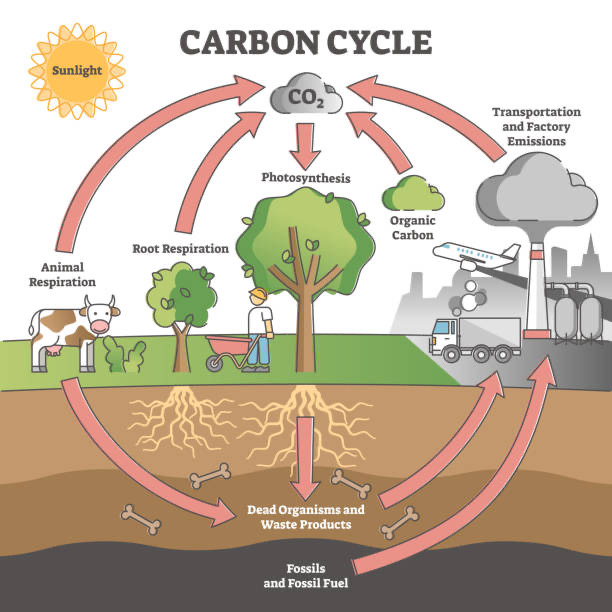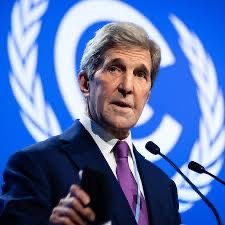During our schooling, we learned basic information about photosynthesis – Photosynthesis is the process by which green plants and certain other organisms transform light energy into chemical energy. During photosynthesis in green plants, light energy is captured and used to convert water, carbon dioxide, and minerals into oxygen and energy-rich organic compounds.

Carbon dioxide is what plants live on, along with water, soil, ideal temperature, and fertilizer.
Remove the carbon dioxide and kill the plants. No more organic veggies, no more rainforest,no more grain for cows, no more food for pets, and no more National Parks.
According to the North Carolina State Department of Horticultural Science : ONE LARGE TREE CAN PROVIDE A DAY’S SUPPLY OF OXYGEN FOR AT LEAST FOUR PEOPLE.The three major functions that are basic to plant growth and development are:
- Photosynthesis – The process of capturing light energy and converting it to sugar energy, in the presence of chlorophyll using carbon dioxide and water.
- Respiration – The process of metabolizing (burning) sugars to yield energy for growth, reproduction, and other life processes.
- Transpiration – The loss of water vapor through the stomata of leaves.Photosynthesis primary difference between plants and animals is the plant’s ability to manufacture its own food. In photosynthesis,carbon dioxide from the air and water from the soil react with the sun’s energy to form photosynthates (sugars, starches, carbohydrates, and proteins) and release oxygen as a byproduct. [Figure 1]

Figure 1. In photosynthesis, the plant uses water and nutrients from the soil, and carbon dioxide from the air with the sun’s energy to create photosynthates. Oxygen is released as a byproduct. Photosynthesis literally means to put together with light. It occurs only in the chloroplasts, tiny sub-cellular structures contained in the cells of leaves and green stems. A simple chemical equation for photosynthesis is given in Figure 2.

Figure 2. The simple chemical equation for photosynthesis.
This process is directly dependent on the supply of water, light, and carbon dioxide. Limiting any one of the factors on the left side of the equation (carbon dioxide, water, or light) can limit photosynthesis regardless of the availability of the other factors. An implication of drought or severe restrictions on landscape irrigation is a reduction in photosynthesis and thus a decrease in plant vigor and growth.
In a tightly closed greenhouse there can be very little fresh air infiltration and carbon dioxide levels can become limiting, thus limiting plant growth. In the winter, many large commercial greenhouses provide supplemental carbon dioxide to stimulate plant growth.
The rate of photosynthesis is somewhat temperature dependent. For example, with tomatoes, when temperatures rise above 96°F the rate of food used by respiration rises above the rate of which food is manufactured by photosynthesis. Plant growth comes to a stop and produce loses its sweetness. Most other plants are similar. [Figure 3]

Figure 2. The simple chemical equation for photosynthesis.
This process is directly dependent on the supply of water, light, and carbon dioxide. Limiting any one of the factors on the left side of the equation (carbon dioxide, water, or light) can limit photosynthesis regardless of the availability of the other factors. An implication of drought or severe restrictions on landscape irrigation is a reduction in photosynthesis and thus a decrease in plant vigor and growth.
In a tightly closed greenhouse, there can be very little fresh air infiltration and carbon dioxide levels can become limiting, thus limiting plant growth. In the winter, many large commercial greenhouses provide supplemental carbon dioxide to stimulate plant growth.
The rate of photosynthesis is somewhat temperature dependent. For example, with tomatoes, when temperatures rise above 96°F the rate of food used by respiration rises above the rate at which food is manufactured by photosynthesis. Plant growth comes to a stop and produce loses its sweetness. Most other plants are similar. [Figure 3]
Figure 3. For the tomato plant, rates of photosynthesis and respiration both increase with increasing temperatures. As the temperature approaches 96°F, the rate of photosynthesis levels off, while the rate of respiration continues to rise.

At the virtual Leaders’ Climate Summit , climate czar John Kerry made the claim that even if a goal of net-zero emissions is achieved, carbon dioxide will still need to be removed from the atmosphere.
Kerry spoke through a screen as the summit was held on a virtual format, saying, “Even if we get to net zero, we still have to get carbon dioxide out of the atmosphere. This is a bigger challenge than a lot of people have really grabbed onto yet.”
Caught on video: John Kerry admitted U.S. CO2 emissions cuts are pointless at Joe Biden’s Leaders Summit on Climate where they say:
“Confronting the climate crisis requires unprecedented global cooperation, as well as a shared sense of urgency and ambition. President Biden convened the virtual Leaders Summit on Climate to ensure close coordination on addressing the climate crisis with key players in the international community at the highest levels of government. We can solve this crisis—but only if we work together.”
John Kerry at Biden’s #LeadersClimateSummit:
— Steve Milloy (@JunkScience) April 22, 2021
‘Net zero is not enough. We need to remove CO2 from the atmosphere.’
A statement of climate futility and insanity. pic.twitter.com/CqtIXI8Xon
Kerry said:
“…getting to net zero [carbon dioxide emissions] is gonna be hard, really hard… that will depend on breakthrough technologies and breakthrough innovations. But even if we get to net zero, we still have to get carbon dioxide out of the atmosphere.”
He’s saying essentially that cuts won’t matter, but technology and innovation will. He also seems to erroneously think “net zero” applies to getting ALL of the carbon dioxides out of the atmosphere, which will end all plant life on Earth if it happened.

Bill Gates explains how cutting CO2 emissions means transforming nearly every aspect of our lives :
Inspired by India’s efforts to curb carbon emissions, says Bill Gates :
Gates congratulated PM Modi for taking a lead on the global initiative of citizen action to promote pro-climate behaviours.He said collective global action to address climate change is needed more than ever and India’s role and leadership are crucial in ensuring that “we reach our climate goals”.
